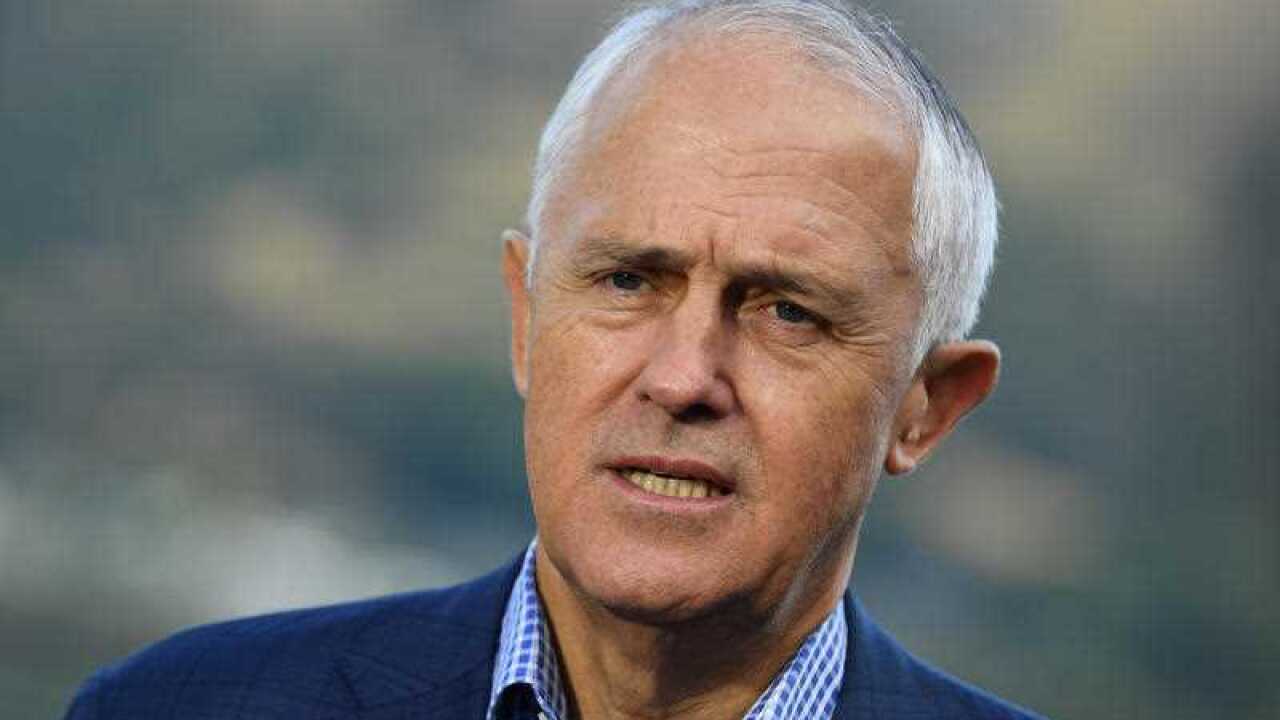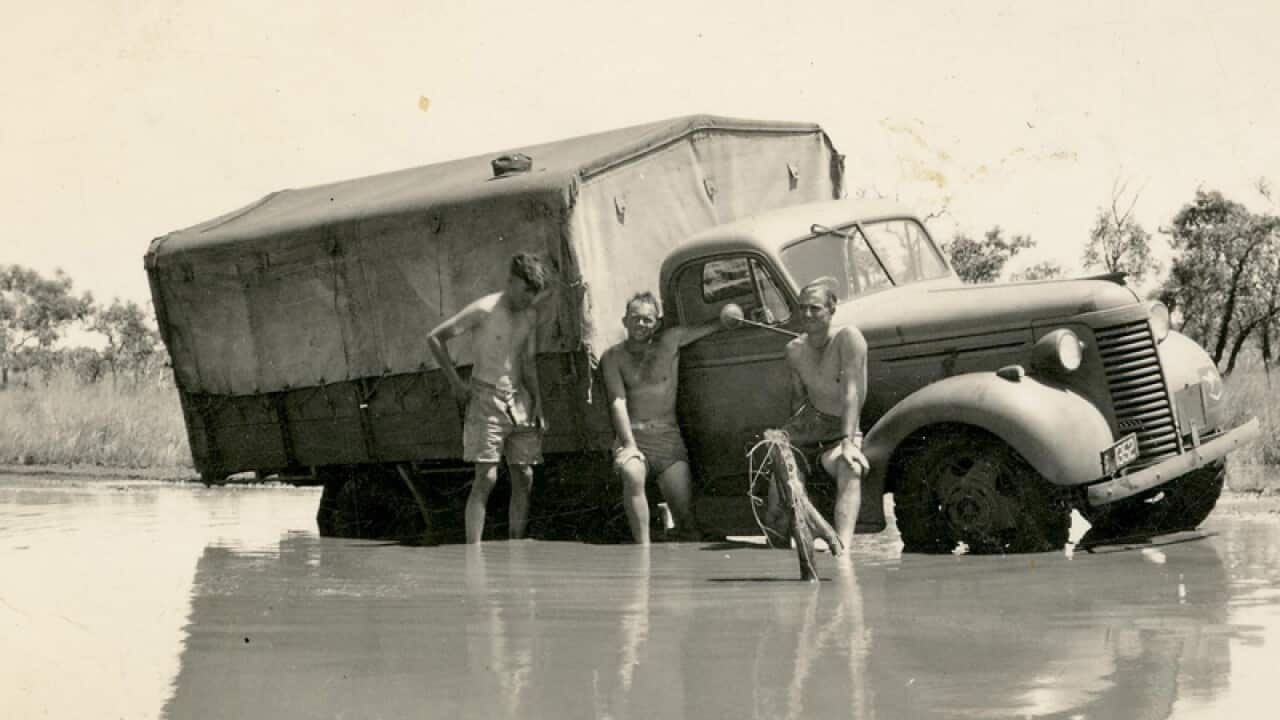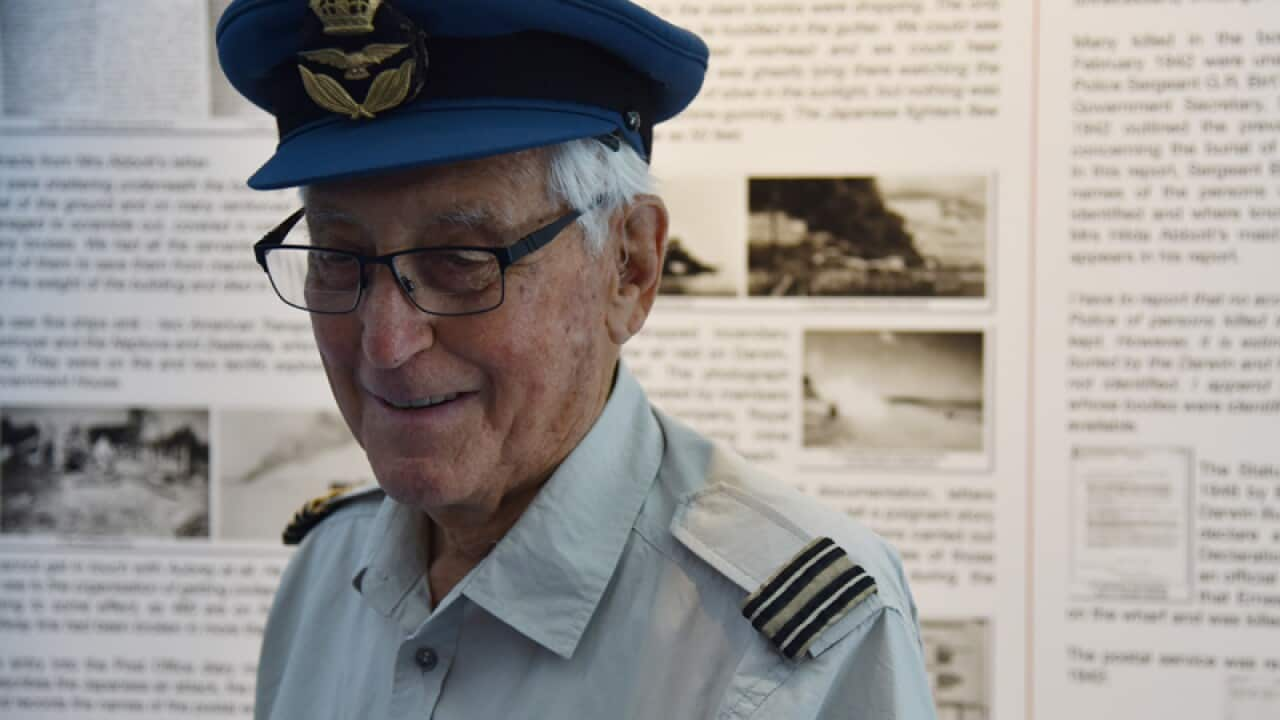During the Second World War, around 4,000 men, women and children were rounded up and sent to civilian internment camps in Australia, which were already detaining thousands of Italians and German civilians.
Joe Murakami was just 14 years old and living in Darwin when his life was thrown into chaos.
“One day the soldiers came and brought us in, we didn’t know what was going on,” he told SBS News by phone from the retirement home in Kawasaki, Japan where he now lives.
“They said we were to be taken to an internment facility and get everything together in the few hours…we had to abandon everything.” The family was taken from Darwin to an internment camp in Tatura, Victoria. Other camps specifically for civilian internees were set up in Loveday, South Australia, and Hay, New South Wales.
The family was taken from Darwin to an internment camp in Tatura, Victoria. Other camps specifically for civilian internees were set up in Loveday, South Australia, and Hay, New South Wales.

Tatura civilian internment camp (Photo courtesy of the Australian War Memorial) Source: Australian War Memorial
Mr Murakami was born in Australia and his father, Yasukichi Murakami, was a successful businessman, photographer and inventor.
Yasukichi Murakami had applied for Australian naturalisation before the war but was rejected because of the White Australia policy at the time. He died while in the internment camp. “They didn’t care if you were born in Australia or not, if you were Japanese or of Japanese abstraction you were a ‘Jap’, that was that,” Mr Joe Murakami said.
“They didn’t care if you were born in Australia or not, if you were Japanese or of Japanese abstraction you were a ‘Jap’, that was that,” Mr Joe Murakami said.

Joe's father, Yasukichi Murakami, was a succesful businessman in Darwin when the war broke out. Source: Photo courtesy of the Murakami family archives
All internees were given a number they had to wear around their neck on a tag and despite 75 years passing, Joe said he will always remember his number: 18102.
“There was no school. Everyone would congregate in the dining hall for meals. We couldn’t go outside the barbed wire fences, but we could play outside the huts,” he said.

Joe Murakami was 14 years old when he was interned (photo by Kenji Maeji) Source: Kenji Maeji
Families torn apart
Along with Japanese civilians, Australia also detained around 4,700 Italians and 2,000 Germans. Smaller numbers of Chinese, Portuguese and Javanese were also detained.
The camps also later held almost 9,000 civilians arrested in neighboring allied countries and transferred to Australia for detention.
After the war, Mr Murakami said there was some hostility towards Japanese people in the community and he often allowed himself to pass-off as Chinese. He later moved to Japan, where he worked until retirement.
Tomoko Irlean Matsumoto was four years old when her father was taken to the camp in Tatura. Irlean’s father was Japanese and her mother was Aboriginal. While her and her siblings initially went with their father to Tatura, they were later separated from their parents and sent to a Christian Mission in the Tiwi Islands, along with members of the Stolen Generations.
Irlean’s father was Japanese and her mother was Aboriginal. While her and her siblings initially went with their father to Tatura, they were later separated from their parents and sent to a Christian Mission in the Tiwi Islands, along with members of the Stolen Generations.

Tomoko Irlean Matsumoto was intitially interned at Tatura, but was later seperated from her parents. Source: Screenshot SBS
“I was still confused (at that time), still a bit traumatised about being separated from our parents,” Ms Matsumoto told SBS News.
“But mainly I remember the picnic days, when the older girls used to take us out picnicking.”

Tomoko Irlean Matsumoto's mother was Aboriginal and she and her siblings were sent to a Christian mission. Source: From Tomoko Irlean Matsumoto
'A story of immigration'
Ms Matsumoto said her father, Kakio Matsumoto, built his life in Australia and it was his home.
“He was just a worker, lived and worked in Australia for so long and then get taken as a prisoner of war,” she said. “In a way I think that wasn’t fair.”
Japanese-Australian historian Yuriko Nagata has tracked down many of the remaining former Japanese internees and recorded their stories.
She says the history of how Australia treated its early immigrants is a very important one.
“Australia is an immigrant country. So the history of internment during World War Two should be written and it has to be known,” Ms Nagata told SBS News.
The governments in both the United States and Canada have apologised for the internment of Japanese civilians during the war. But Ms Matsumoto said she doesn’t want an apology. She simply wants Australians to know the story of what happened to families like hers.
But Ms Matsumoto said she doesn’t want an apology. She simply wants Australians to know the story of what happened to families like hers.

Japanese internees were finger printed and given a number. Source: Jarni Blakkarly
After the war ended, Ms Matsumoto and her family were reunited and they settled down in Broome.
“We were reunited in 1948…all I remember was the spear grass was so high, so it must have been some time after the wet down there,” she said.
“For myself, everything just seemed to be right when we were back together again.”
A WAR OF HOPE: In 1942, in the midst of World War II, 235 Guugu Yimithirr people of North Queensland were forcibly removed 1500km from their land by armed forces into a government exile settlement at Woorabinda






